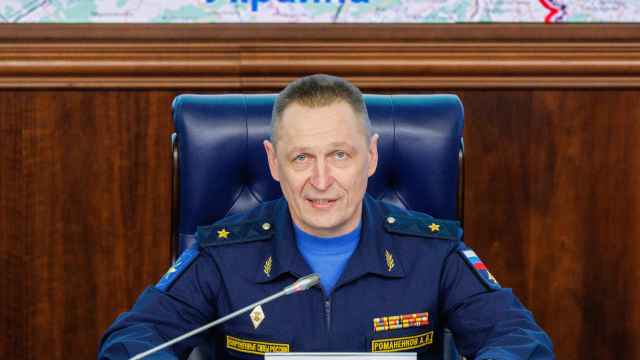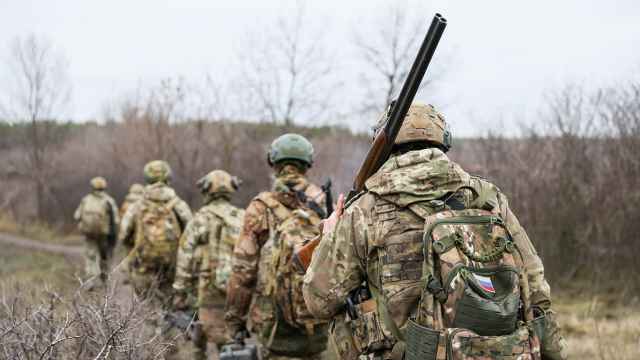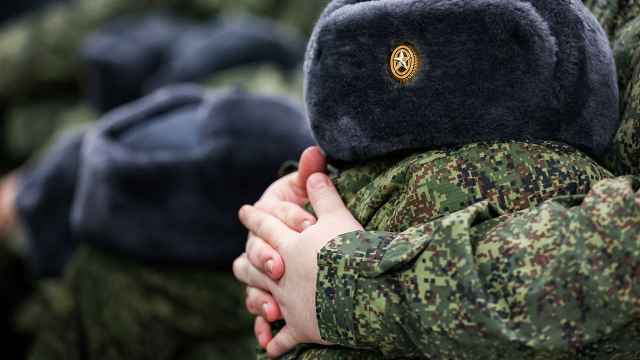Image management is a phenomenon practiced worldwide, but it has been polished to perfection in Russia. Projecting the appropriate image is de rigueur from the enormous, impressive displays of military might parading across Red Square on Victory Day to the spectacularly beautiful Seven Sister Moscow skyscrapers to the unbelievably high spike heels that are part of the standard uniform for so many young, modern Russian women.
As I have studied and observed the various causations of image management over the years, I have found that some of the most common reasons are to enhance self-esteem, create an image that will attract someone or something desired and to ensure safety by either appearing to be complying with someone else's standards — or maintaining an image that would discourage victimizers.
Creating an image that will make you look and feel better, be more attractive to the opposite sex, or perhaps help to place you in a better position professionally, is relatively easy to understand. But comprehending how to provide safety becomes a much more complex issue.
Because the primal need for safety is the most important requisite in survival, image management to maintain safety is practiced by all living things. Marine life, birds and animals that are capable of melting invisibly into their environment are masters at image management. They appear to be something they are not.
One of the most amazing examples of this is video footage of a shape-shifting octopus that literally disappears as it miraculously morphs into algae on the ocean floor. As this octopus changes its pattern, color, brightness and texture, its camouflage is so complete that it is impossible to discern the reality of an octopus invertebrate from an algae plant — an entirely different species.
For humans, image management may not be as dramatic as that octopus but can certainly be as creative — especially when honed over many generations. It can take several forms. It can be a facade, an outright lie, or an exaggeration of an actual fact.
In Russia, using image management as a form of protection has developed as a necessity. Russia shares a border with 16 countries and has the second-longest land border of any country in the world. It has endured invasions from all sides for centuries. In comparison, the United States has had relatively few battles on its soil. It shares borders only with Canada and Mexico and is buffered by the Atlantic and Pacific oceans.
Because of unending clashes with neighboring countries, the fear of invasion and suspicion of foreigners has remained a primary obsession for the majority of Russia's leadership. While battle history justifies their fear, it has often escalated to paranoia for those in power. How they deal with this critical issue has varied over time. The primary strategy has been to capitalize on the fact that they are the largest country on the planet in terms of territory, so it becomes logical that Russia creates an image that portrays itself as the strongest, most powerful and formidable country in the world. The fact that a bear has been the symbol of Russia since the 1600s is no accident. It sends a clear message that to mess with this huge Russian bear could have serious consequences.
But to set up such a powerful aura as a protection against potential invaders also carries with it the burden of maintaining this persona, even if it becomes a facade that actually hides a flawed reality.
Russian culture is known for its black and white, all-or-nothing thinking. As a result, some leaders habitually maintained that to admit any defect or weakness would create a vulnerability that would expose the country to invasion. This distorted thinking creates a system that can never acknowledge that problems exist within their supposedly invulnerable realm. As a result, when problems do occur, the standard response is to deny their reality — or if the issues have become public, to blame them upon outsiders, especially the West.
While these actions may have originated in the need to protect from enemies, they also become inevitably entwined with ego and grandiosity.
A classic example occurred in 2000 with the tragic explosions on the Kursk submarine. Russia did not have the capabilities to rescue the men trapped on the doomed vessel and declined rescue offers from British and Norwegian teams. All 118 of the sailors and officers aboard perished. It will never be known how many could have been saved if the government had set aside its pride and readily admitted that it needed help. Sadly, this type of scenario has played throughout Russia countless times.
My colleague Ralph Earle, one of the foremost psychologists in the United States, was invited to visit Russia in 1990 as president of a large psychological association. He visited many clinics, hospitals and treatment centers. I had requested that he ask the directors of these facilities what types of treatment they employed for people who had experienced trauma, abuse and neglect. He asked this question of every director and received the same answer every time: "Those issues do not exist in the Soviet Union." But he went on to say that at almost every facility, someone would slip up to him and whisper: "You do know that they are lying to you. They will never admit to an outsider that we have any problems, even though all those harmful things are very common here."
During the past two decades, many positive changes have occurred in Russia. At the same time, however, the country is still faced with major issues that, to its credit, it has acknowledged as problems. But this recognition has not resulted in a healthy transformation.
When a person, or any type of system (government, family or organization) seeks to maintain an illusion at all costs — even at the cost of human lives — it leaves a legacy of pain and destruction. Unless an unhealthy system acknowledges its defects and weaknesses and seeks to correct and learn from them, it will continue on a toxic path until the decay becomes so intense that it destroys itself.
In one of my early classes in Moscow, a businessman said, "I remember as a boy thinking, 'If we are the greatest country in the world, why are we so poor?'" As I listened, I was reminded of the Hans Christian Andersen fairy tale about the vain emperor strutting naked down the street thinking he has on a magical suit until a little boy, who is innocently naive and does not know that citizens had to deny reality and lie to survive in this kingdom, cries out, "But the emperor has no clothes!"
After several more classes, this same businessman said: "I always thought that to be a real Russian man, I needed to be strong and never admit any flaws — that to do so would be weak and cowardly. But I now realize that genuine strength exists only in truth."
Marilyn Murray is an educator specializing in the treatment of trauma, abuse and deprivation, with more than 2,000 people attending her classes in Russia and other countries from the Commonwealth of Independent States over the past 10 years. Her second book, "The Murray Method," will be released in English and Russian this summer. You can read her interview with The Moscow Times here.
A Message from The Moscow Times:
Dear readers,
We are facing unprecedented challenges. Russia's Prosecutor General's Office has designated The Moscow Times as an "undesirable" organization, criminalizing our work and putting our staff at risk of prosecution. This follows our earlier unjust labeling as a "foreign agent."
These actions are direct attempts to silence independent journalism in Russia. The authorities claim our work "discredits the decisions of the Russian leadership." We see things differently: we strive to provide accurate, unbiased reporting on Russia.
We, the journalists of The Moscow Times, refuse to be silenced. But to continue our work, we need your help.
Your support, no matter how small, makes a world of difference. If you can, please support us monthly starting from just $2. It's quick to set up, and every contribution makes a significant impact.
By supporting The Moscow Times, you're defending open, independent journalism in the face of repression. Thank you for standing with us.
Remind me later.





